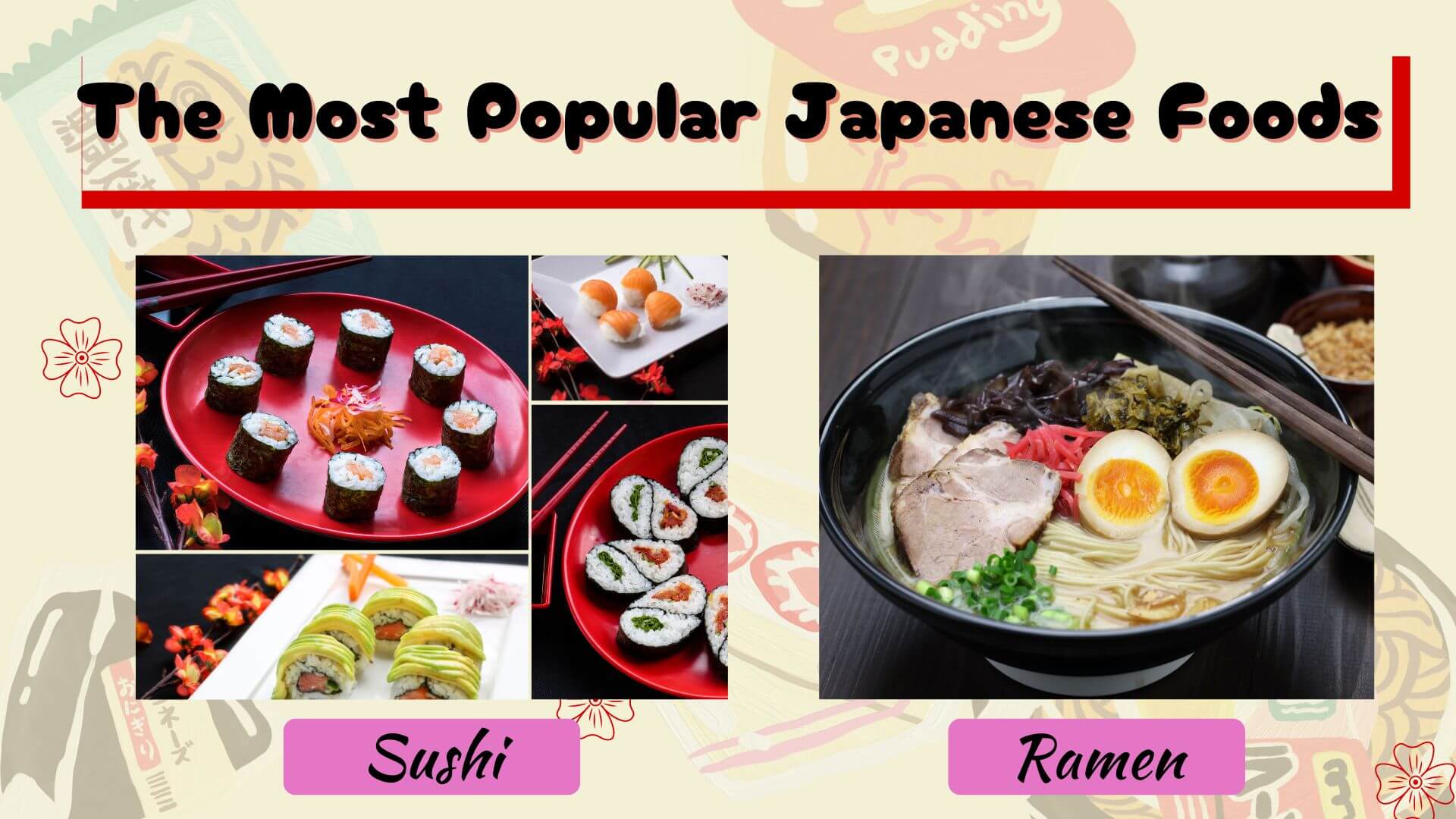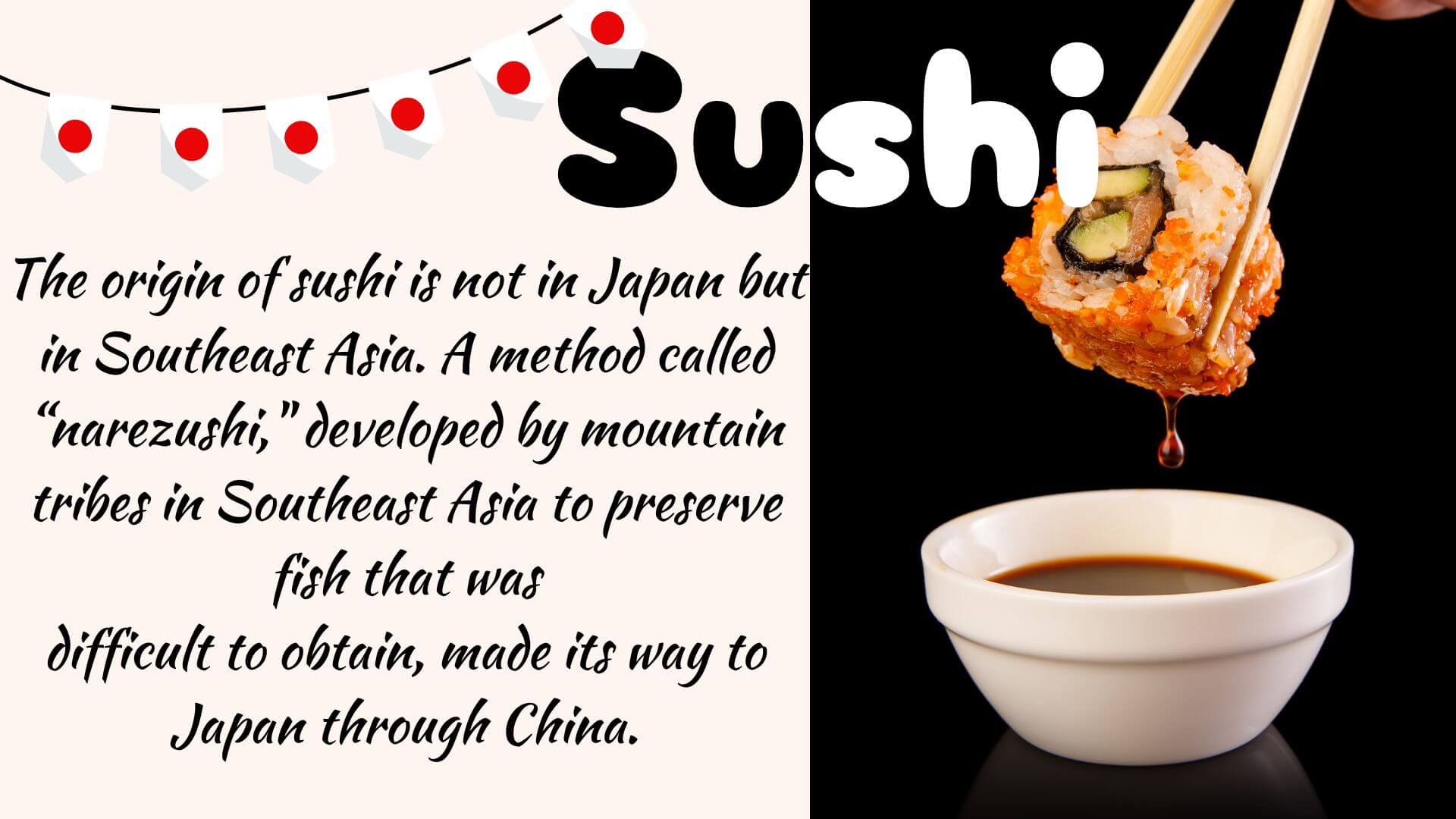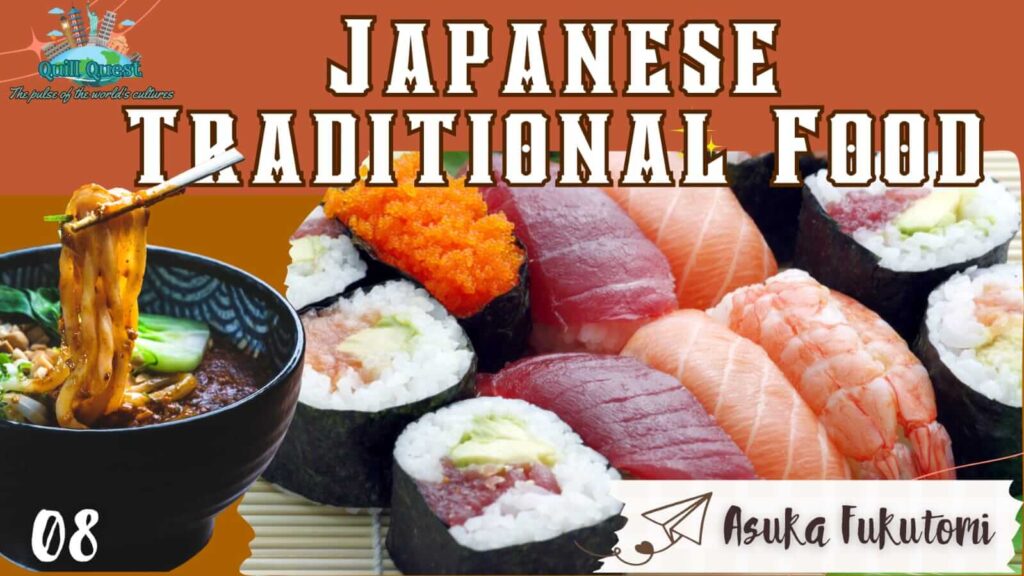When we talk about traditional Japanese food, what comes to mind for people? For foreigners, sushi is likely the first thing that comes to mind, and perhaps ramen as well. Japanese people may think of osechi dishes eaten during the New Year, as well as miso, natto, and other items. Some recall regional dishes commonly enjoyed in their hometowns. Interestingly, the origin of sushi is not in Japan but in Southeast Asia. A method called “narezushi,” developed by mountain tribes in Southeast Asia to preserve fish that was difficult to obtain, made its way to Japan through China. In the Edo period, a type known as “hayazushi” appeared, characterized by seasoning with vinegar and salt. The rice mixed with vinegar was packed into a box, fish was placed on top, and a drop lid with a weight was added. It was left for several hours before being consumed. In the Meiji era, hand-formed sushi using fresh fish emerged. With the spread of electric refrigerators in the Taisho era, sushi restaurants saw an increase in the variety of toppings, and the size of the sushi became smaller. Nigiri sushi, which is typically consumed in one bite, is said to be crafted with consideration for ease of consumption, such as making slightly smaller pieces for female customers.
Interestingly, the origin of sushi is not in Japan but in Southeast Asia. A method called “narezushi,” developed by mountain tribes in Southeast Asia to preserve fish that was difficult to obtain, made its way to Japan through China. In the Edo period, a type known as “hayazushi” appeared, characterized by seasoning with vinegar and salt. The rice mixed with vinegar was packed into a box, fish was placed on top, and a drop lid with a weight was added. It was left for several hours before being consumed. In the Meiji era, hand-formed sushi using fresh fish emerged. With the spread of electric refrigerators in the Taisho era, sushi restaurants saw an increase in the variety of toppings, and the size of the sushi became smaller. Nigiri sushi, which is typically consumed in one bite, is said to be crafted with consideration for ease of consumption, such as making slightly smaller pieces for female customers. sushi thrived in Japan, during the economic growth period of the Showa era, street-style sushi stalls were abolished for hygiene reasons. However, in 1958, the first conveyor belt sushi restaurant opened in Osaka, sparking a conveyor belt sushi boom. Sushi once considered a luxury, became readily accessible to the general public again and is now loved by many. Incidentally, ramen spread across Japan in the Meiji era. With increased international exchanges, Chinese noodle dishes made their way to Japan. Although ramen is now a staple dish, it is not officially considered a traditional Japanese food.
sushi thrived in Japan, during the economic growth period of the Showa era, street-style sushi stalls were abolished for hygiene reasons. However, in 1958, the first conveyor belt sushi restaurant opened in Osaka, sparking a conveyor belt sushi boom. Sushi once considered a luxury, became readily accessible to the general public again and is now loved by many. Incidentally, ramen spread across Japan in the Meiji era. With increased international exchanges, Chinese noodle dishes made their way to Japan. Although ramen is now a staple dish, it is not officially considered a traditional Japanese food. Most traditional foods are rooted in preserved or stored items. The ingenuity of our ancestors in preserving food is evident. While sushi is not commonly made and eaten at home, fermented foods like miso and umeboshi (pickled plums) are still prepared in households. The flavors passed down through generations contribute to the uniqueness of these dishes.
Most traditional foods are rooted in preserved or stored items. The ingenuity of our ancestors in preserving food is evident. While sushi is not commonly made and eaten at home, fermented foods like miso and umeboshi (pickled plums) are still prepared in households. The flavors passed down through generations contribute to the uniqueness of these dishes.
Written By:

Asuka Fukutomi
Japan
Edited By:

Rtr. Mekhala Vithanage
(Blog Team Member 2023-24)



❤️❤️